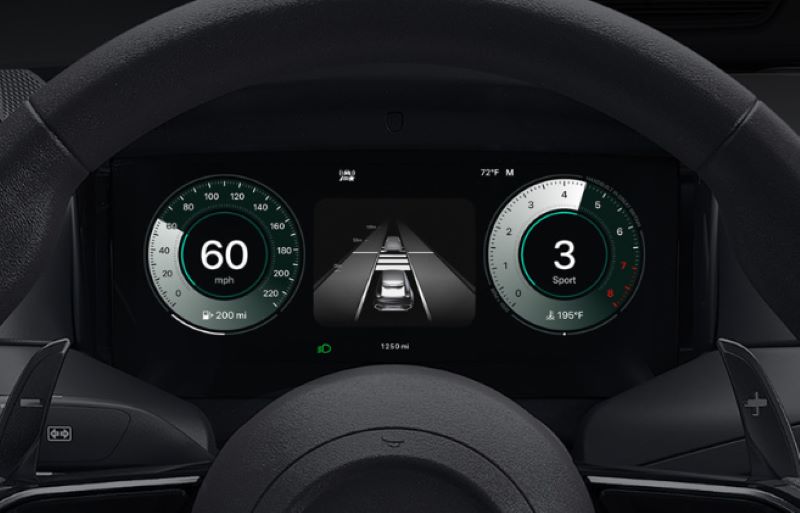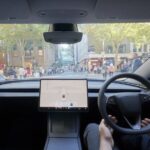In today’s rapidly advancing technological landscape, automobiles are transforming from mere modes of transportation to smart mobile spaces. As the key link between the car and the driver, in-car systems are attracting significant attention for their innovations in functionality and user experience. Apple has once again made a bold move in this field, launching the next-generation CarPlay Ultra on May 15, 2025, a move that has sparked widespread discussions in both the technology and automotive industries. This is expected to reshape the future landscape of in-car interaction.
CarPlay Ultra: Comprehensive Innovation in Functionality and Experience
The biggest breakthrough of CarPlay Ultra lies in its deep integration with vehicle control functions, completely eliminating the previous limitations of CarPlay, which was primarily used as a tool for projecting your phone screen. In the past, when using CarPlay, drivers often had to switch back to the car’s original system to adjust functions like air conditioning or seat heating, which made the experience fragmented. Now, CarPlay Ultra takes full control of the vehicle’s core functions, allowing drivers to easily control the air conditioning, seats, driving modes, and more, all within the same interface. For example, with simple touch gestures or Siri voice commands, drivers can quickly adjust the air conditioner’s temperature, fan speed, or airflow direction, or switch between driving modes—whether from Comfort mode to Sport mode—offering a smooth, intuitive, and convenient driving experience.
CarPlay Ultra has also overhauled the vehicle’s instrument cluster. It not only displays traditional driving information such as speed, RPM, and fuel level but also integrates real-time data from the iPhone, navigation instructions, media playback status, and the vehicle’s own driving assistance system alerts, tire pressure monitoring, and more. For example, during navigation, the instrument cluster can visually show the direction and distance to the next turn, while also displaying information about the current music being played, so drivers don’t need to frequently shift their focus, thus enhancing both safety and concentration while driving. Additionally, CarPlay Ultra allows customization of the instrument cluster’s style, enabling drivers to adjust the color, layout, and display style according to their preferences, creating a personalized driving interface and adding a touch of fun to the experience.
CarPlay Ultra offers a wide range of operation options. Drivers can control the system through the touchscreen for a direct and intuitive experience, or use physical buttons if the car supports them, catering to different driving preferences. Siri has also been enhanced to serve as the intelligent hub capable of understanding and executing complex vehicle control commands. With simple voice commands like “Turn on seat heating” or “Switch to Sport mode,” Siri can quickly and accurately perform the actions, making the driving process safer and easier. Moreover, Apple has partnered with various automakers to create custom theme interfaces that are highly brand-recognizable for different car models. This ensures that, even while enjoying the smooth CarPlay Ultra experience, drivers can still appreciate the unique style and design heritage of their car brand, avoiding the problem of homogenization when different models use the same system. Additionally, drivers can further personalize the theme, changing color schemes or wallpapers, achieving a truly unique driving experience.
Launch and Promotion: From Aston Martin to More Brands
The first batch of models to support CarPlay Ultra comes from the luxury car manufacturer Aston Martin. Starting from May 15, consumers in the United States and Canada who purchase new Aston Martin models will be able to experience CarPlay Ultra in their vehicles. For Aston Martin owners, this integration adds a significant new layer of intelligent interaction, further enhancing the driving experience. Additionally, existing Aston Martin vehicles equipped with the next-generation infotainment system will receive an over-the-air update in the coming weeks to support CarPlay Ultra, ensuring that more users can enjoy the convenience of the new system.
In addition to Aston Martin, brands like Hyundai, Kia, and Genesis have confirmed they will also feature models with CarPlay Ultra. Apple has stated that CarPlay Ultra will gradually expand to more vehicles and regions over the next 12 months. This expansion plan means that in the near future, more drivers globally will be able to experience the new, intelligent in-car experience offered by CarPlay Ultra. It also signals that CarPlay Ultra could become a powerful force in the in-car system market, driving the industry towards smarter and more convenient technology.

Challenges and Opportunities in the Chinese Market
In China, the world’s largest new energy vehicle market, CarPlay Ultra faces fierce competition. In recent years, China’s new energy vehicle market has seen tremendous growth, and local brands have made impressive strides in smart cockpit systems. Companies like Huawei with HarmonyOS, Xiaomi’s Surge OS, Nio’s NOMI, and XPeng’s Xmart OS have all rolled out smart cockpit systems that offer smooth operation, rich functionality, and deep integration with local ecosystems. These systems cater to the specific habits and needs of Chinese consumers, including integrating popular domestic apps like WeChat, Gaode Map, and Douyin (TikTok), enabling drivers to easily perform social, navigation, and entertainment functions. Additionally, many of these systems come with powerful voice interaction features capable of understanding a variety of Chinese dialects, providing more personalized services. In comparison, while CarPlay Ultra has certain advantages in terms of functionality, it may need to work harder to meet the localized demands of Chinese consumers.
Chinese consumers have unique expectations when it comes to smart cockpits. They not only want seamless integration with their smartphones but also expect localized services. For example, consumers hope to receive accurate congestion information in real-time on the navigation system, and have the ability to order food delivery or find nearby charging stations directly from the system. In entertainment, they expect to smoothly watch short videos and follow online shows. However, Siri and Apple Maps in China are still not as competitive as local voice assistants and mapping services, which may affect the acceptance of CarPlay Ultra among Chinese consumers. Furthermore, Chinese automakers like BYD, Nio, Li Auto, and XPeng are actively investing in the development of their own smart cockpit systems. They view smart cockpits as core elements to enhance their brand competitiveness and are more inclined to create their own ecosystems rather than rely on third-party systems like CarPlay Ultra. This poses a challenge for CarPlay Ultra’s adoption in China.
Apple’s Strategy for Market Penetration
To succeed in China, Apple will need to adopt a flexible and effective strategy. First, deep localization is key. Siri must be further optimized to understand Chinese, especially various dialects, while Apple Maps must improve its accuracy in China and integrate with popular local services such as WeChat and Alipay to meet the daily needs of Chinese consumers. Secondly, Apple could innovate in its collaboration model, offering modular solutions that allow automakers to choose certain functions of CarPlay Ultra to integrate into their own systems, rather than attempting to completely take over the car’s infotainment system. This could improve automakers’ willingness to cooperate with Apple. Additionally, Apple could initially target the high-end luxury car market in China, such as Porsche and Mercedes-Benz. These brands’ users tend to have a higher degree of reliance on Apple’s ecosystem and are more open to new technologies. By establishing a strong presence in the high-end market, Apple can gradually expand its influence in China.
Conclusion
The launch of CarPlay Ultra marks a significant step forward for Apple in the smart in-car space. With its powerful functionality and innovative user interface, it offers drivers a brand new intelligent driving experience. However, the global market, particularly in China, presents a range of challenges. Whether CarPlay Ultra can establish itself as a dominant force in the global smart cockpit market will depend on how well Apple addresses the varied needs of different markets and how it collaborates with automakers to create more innovative and customized partnerships. We look forward to seeing how CarPlay Ultra evolves in the future, offering even smarter, more convenient, and personalized in-car experiences while driving the continued growth and innovation of the intelligent in-car industry.












